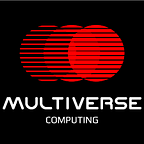How to Optimize an S&P 500 Index Portfolio in <5 minutes with Quantum Processing and Excel
Multiverse Computing’s SML Excel Add-In 2.0 Boosts Portfolio Optimization with Hybrid Quantum Solutions
Widely regarded as the best gauge of U.S. stock market performance, the S&P 500 contains over $7 trillion in direct investments. Creating investment portfolios that maximize return on investments while minimizing risk is one of the central daily challenges for finance, investment management and banking professionals. In some cases, building the ideal portfolio includes so many variables that it becomes difficult for classical computers to provide the best solution in a reasonable timeframe.
Quantum software company Multiverse Computing has developed a user-friendly solution to this evergreen challenge. Singularity allows professionals with no background in quantum computing to quickly build large, optimized portfolios with quantum processing, right on their laptop in Excel.
Following a recent 30-day trial, a large bank noted “the Multiverse solution completes the optimization task in less than 2 minutes — something that would normally take us at least 40–60 minutes. The quality of solutions was as good as the classical methods, and often even better.”
In our previous blog post, we showed how a major European bank used quantum computing for credit scoring with the Singularity Excel Add-In. Today’s example shows how finance professionals can use the Excel Add-In to optimize S&P 500 investments based on 2022 performance in just 5 minutes.
Step 1: Open the Spreadsheet
Open an Excel spreadsheet with the list of assets and their performance information. This includes returns, volatility, and the correlation matrix. This easy set up takes less than a minute.
Step 2: Enter preferences
Optionally set parameters for minimum and maximum investment for specific assets. In the example above, the user prefers FTNT, entering a minimum investment percentage of 5% for FTNT that would override the optimizer in the case that it would choose an investment allocation below 5%. The user has different criteria for DVN, entering a maximum investment of 5%.
Step 3: Enter Performance Information
Open the Portfolio Optimization pop-up window from the menu bar and click the “Assets” box.
Select the names of the assets from the spreadsheet. They do not need to be copied and pasted, as the add-in will automatically enter them when selected.
Repeat these steps with the cells containing the data for the returns, correlation matrix, volatilities, and max/min investment parameters. We’re halfway through now!
Step 4: Specifications and Solver selection
Choose your resolution (desired number of decimal places), target volatility (how much risk you want to take), and maximum percent of total investment for any single asset.
Then select your solver. Singularity includes two hybrid quantum solvers as well as a classical one, allowing users to compare the results from each. D-Wave’s Leap quantum cloud-based solvers use the quantum processing unit for parts of the problem where it benefits most to tackle very large problems.
The Multiverse Hybrid adds some additional calculations to D-Wave’s solver to yield faster results and calculate the Sharpe ratio more accurately.
Step 4: Optimize
Hit the “Optimize” button. In this example, the job was finished successfully in 30 seconds.
Once the job is complete, the Optimization Results tab will display the expected optimized portfolio with expected return, volatility and Sharpe ratio, as well as a pie chart to represent investment allocations visually.
How to get started
To start optimizing your portfolio with quantum processing today, you’ll need Windows 10, Microsoft Excel, the Singularity Add-in, and an authentication key provided by Multiverse.
Singularity customers also have access to a user’s guide for help with installation, authentication, preparing data, training the model, and troubleshooting potential problems.
Contact us here to learn more.
